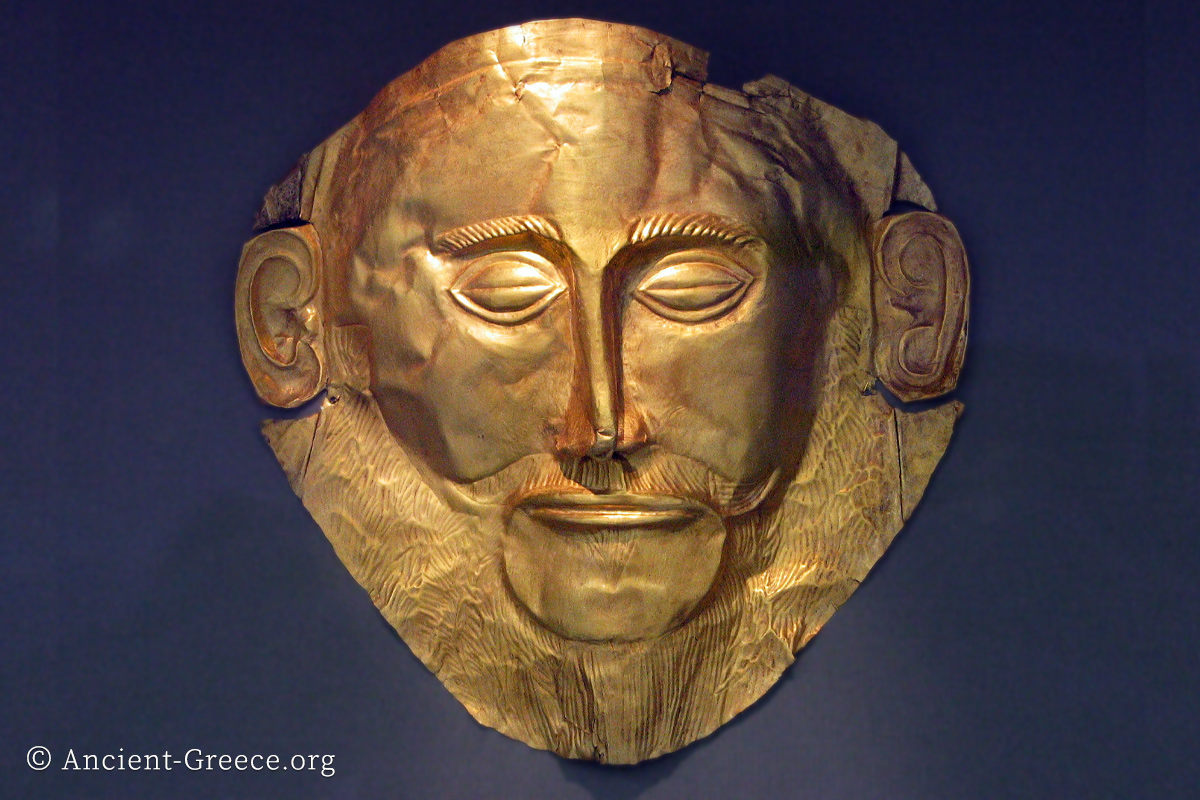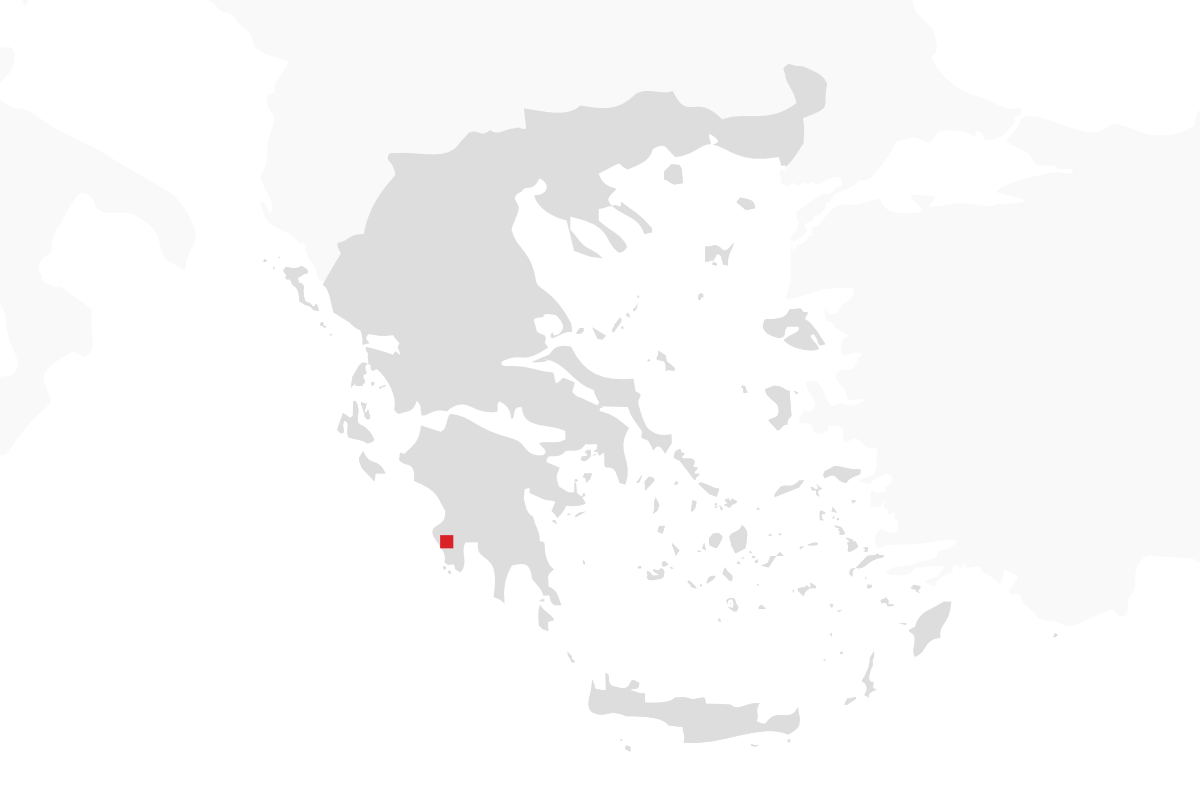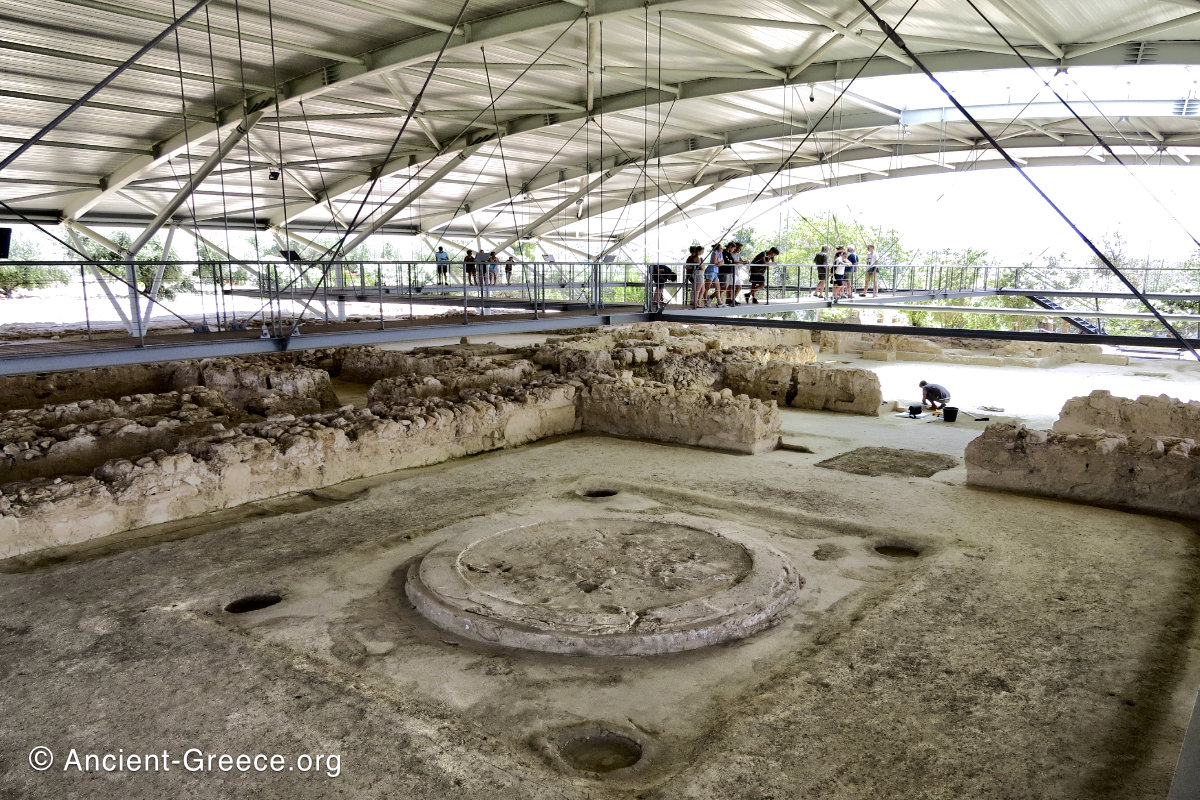
On this page:
The Mycenaean palace of Nestor (Ανάκτορο του Νέστορα) is an archaeological site near Pylos in SW Peloponnese, Greece.
It was an influential center during the Late Bronze Age era (circa 1600-1100 BCE), and it played a role in the Trojan war as recorded in Homer’s Iliad and Odyssey epic poems. It is one of the best-preserved Mycenaean palaces. It was the seat of the ruler, the economic engine, and the administrative center of the mainly agricultural activities of the region.
The palace is associated with the legendary King (wanax) Nestor, a figure from the Homer’s epic poems known for his wisdom and experience in war. It was built by Neleus, the father of Nestor and founder of the Neleid dynasty (early 13th c. BCE to about 1200 BCE).
They came to Pylos, the well-built citadel of Neleus. (Homer, Odyssey, Book 3, 4-5)
Although the historical accuracy of Nestor’s existence is debated, the grandeur of the palace suggests it belonged to a powerful ruler who controlled a prosperous region.
Area Habitation
The Englianos hill was inhabited as early as the Middle Helladic period (2050 – 1680 BCE).
It was fortified by a defensive wall in the Early Mycenaean period (1680 – 1400 BCE).
In the Late Helladic period the area was occupied by many houses that were built on the acropolis and on the lowest terraces of the hill, but after a fire destroyed them, the “wanax” (tribal chief, or king) seems to dominate the hill.
The Palace


The palace of Nestor was excavated in the 20th century by archaeologist Carl Blegen. It occupies the south part of the plain of Ano Englianos and consists of two-storey buildings divided into the king’s residence, officials’ quarters, residential parts, and store rooms, the most important of which were decorated with wall paintings.
The excavation layer visible today is the final of three building phases which preserves clear traces of the conflagration that destroyed the palace around 1200 BCE.
The complex is built in the typical megaron style, similar to contemporary palaces in Mycenae and Tiryns, featuring a central throne room with a large hearth, surrounded by smaller rooms used for various purposes.
According to the information on the archeological site
“The palatial complex consists of four principal buildings (the Southwestern Building, or the Palace of Neleus, the Main Building, the Northeastern Building and the Wine Magazine), and several smaller constructions.
The splendid Main Building was two storeys high, with great courts, many storage magazines, private apartments, workshops, baths, staircases, lightwells, and a drainage system. The walls of its halls and its floors were covered with impressive paintings, Wood, stone, and clay were the basic materials used for building.
There are many elements characteristic of Minoan architecture, more than found in any other palace on the Greek mainland: these include orthostates, walls of ashlar masonry, a system of half-timbering, courts, baths, lightwells, a drainage system, horns of consecration, and a double axe masons’ mark.”
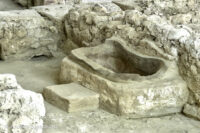
One of the palace’s most striking features is its advanced infrastructure, including storerooms for olive oil, wine, and grain, as well as sophisticated drainage systems.
The northeast area is occupied by a large isolated building with workshops and storage rooms. A small city was spread downhill and spilled into the plateau. Several royal tholos tombs have been found in the surrounding area to the north and south of the palace. Plain chamber tombs were discovered to the west.
The palace serves as an important window into the Mycenaean civilization, offering valuable insights into their architecture, administration, and daily life.
Linear B Tablets
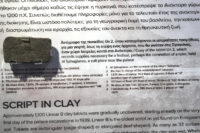
Some of the most important finds from the excavations at the Palace of Nestor include thousands of clay tablets inscribed in Linear B, the script used by the Mycenaeans.
Over 1100 fragments of clay tablets with incised Linear B script were unearthed in the Palace of Nestor. They give us the name of the center as pu-ro (Pylos), and indicate that the kingdom was comprised of two provinces spanning an area lager than 2000 sq. km (similar to the modern Greek province of Messenia).
These tablets, which record economic transactions and administrative details, have provided critical information about Mycenaean bureaucracy and society. The were inscribed when the clay was wet and would have been lost in antiquity, but the fire that destroyed the palace baked the clay tablets, preserving them in hard form.
The linear B tablets confirm that Mycenaeans spoke Greek, and were highly organized, with a complex system of governance, agriculture, and trade.
Photos of the Nestor’s Palace
The palace is shulterred under a roof to protect it from the elements. Elevated ramps allow visitors to view the site from above and watch the ongoing excavations.



















